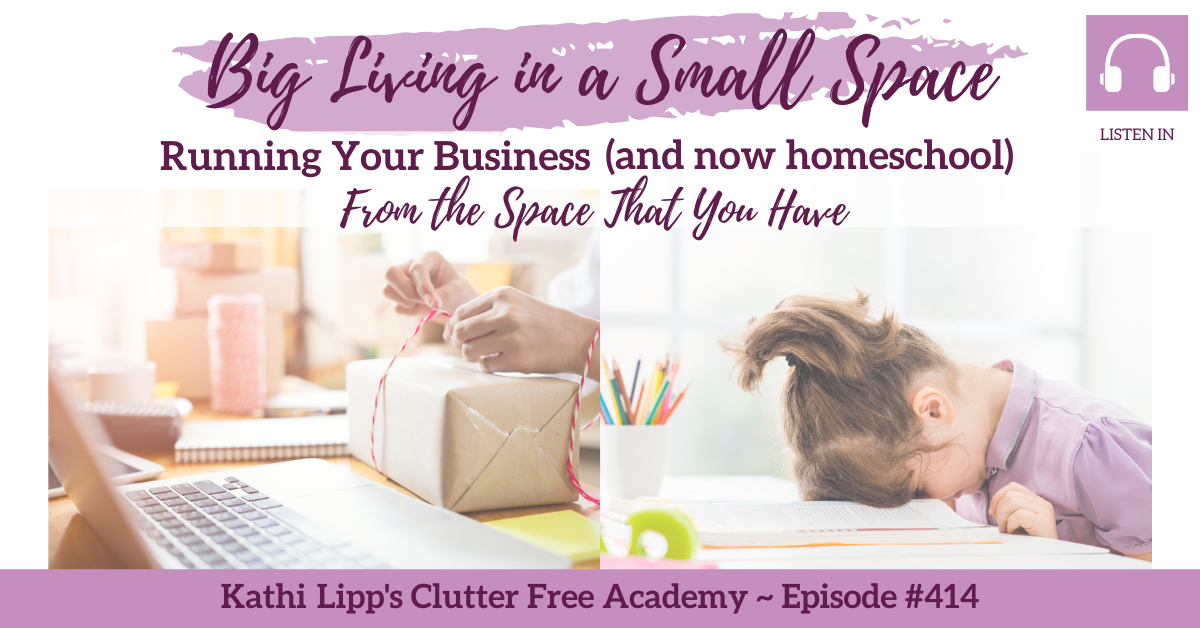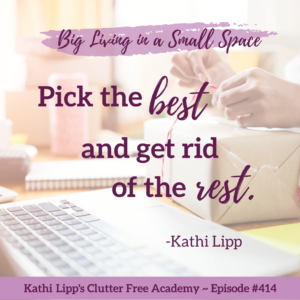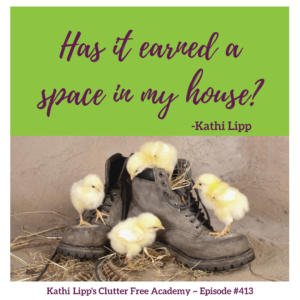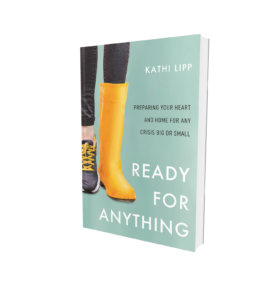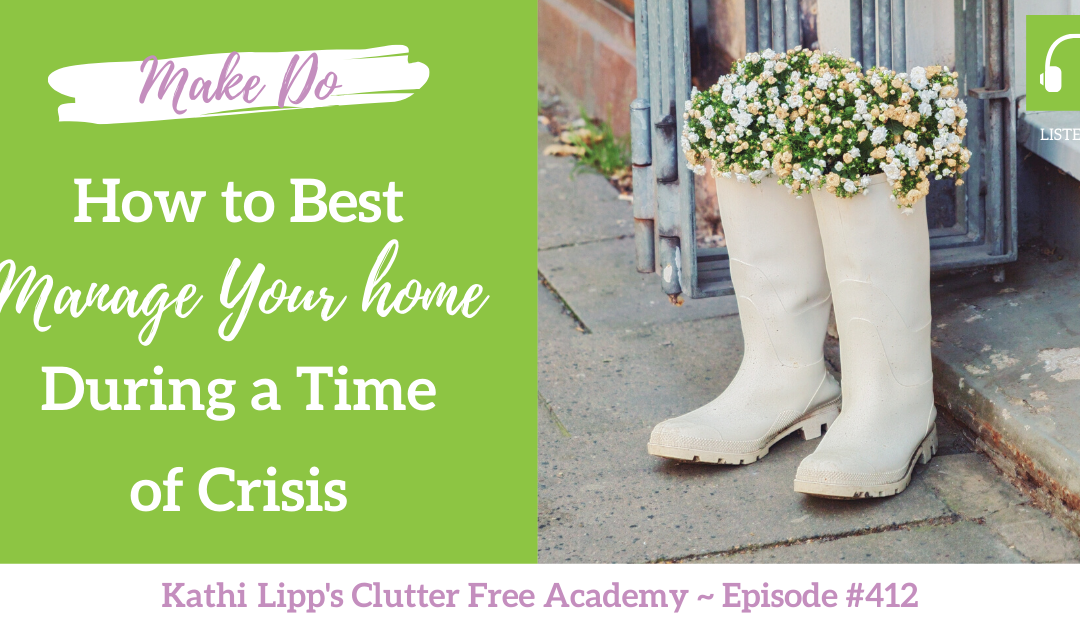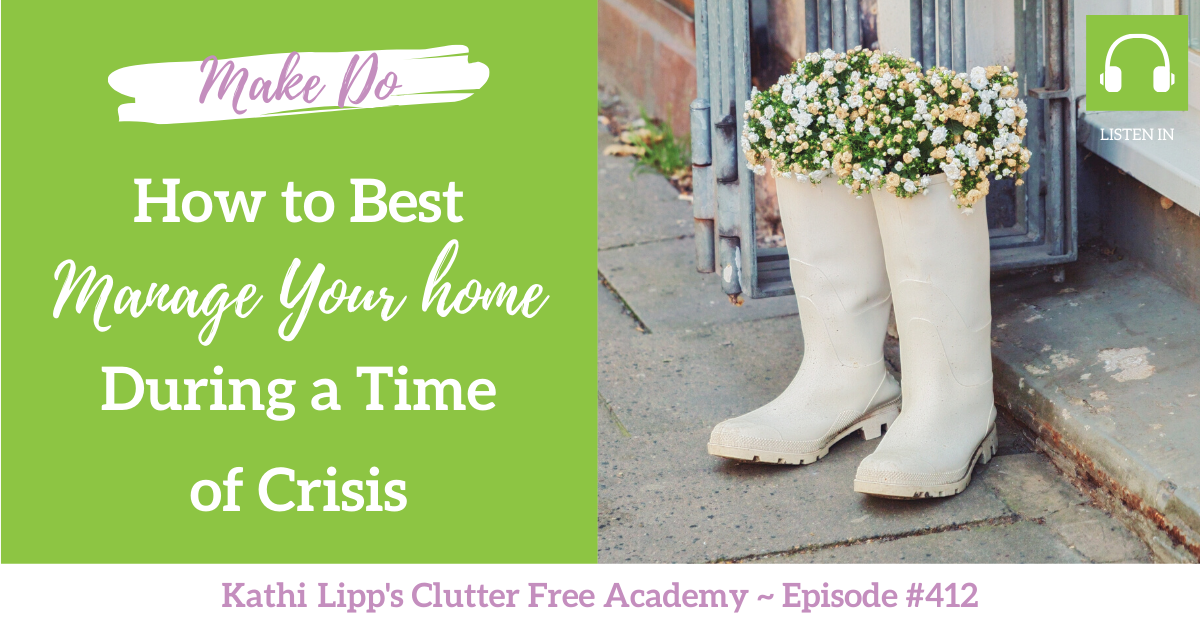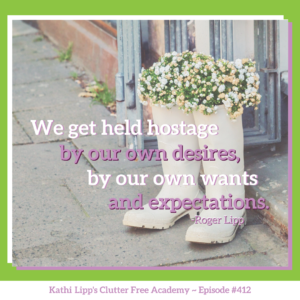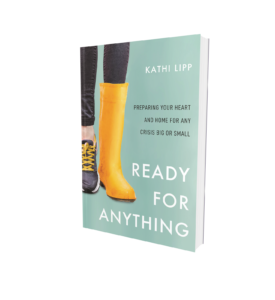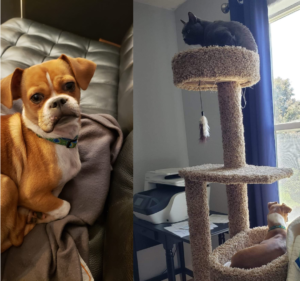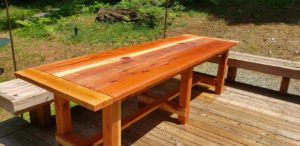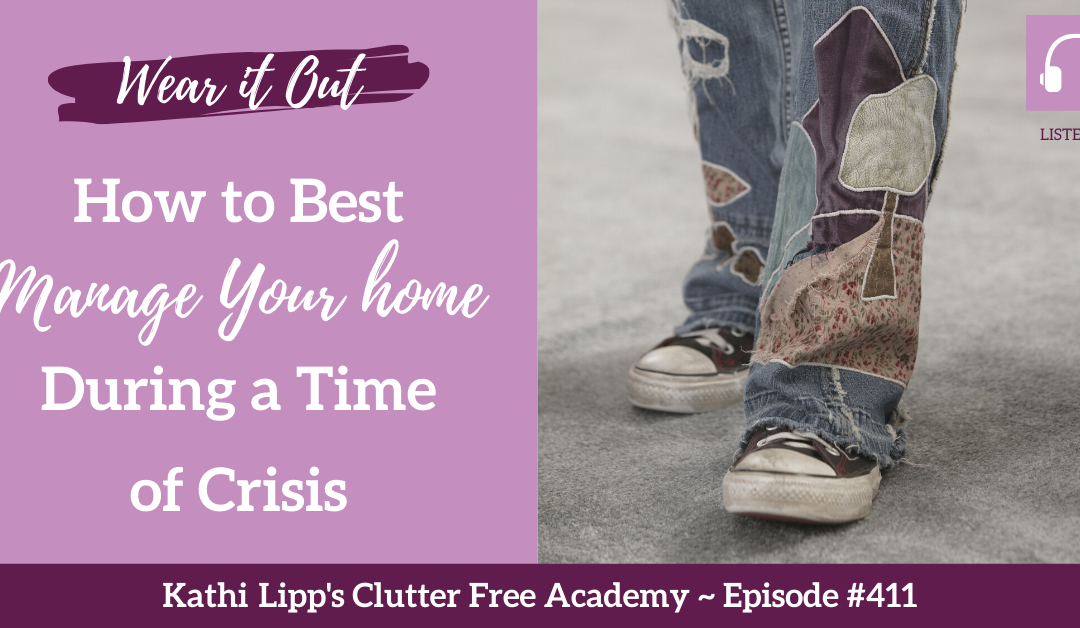
by Guest Blogger | Jun 18, 2020 | Blog, Clutter Free, Clutter Free For Life, Clutter Free Home, Ready For Anything |

Two summers ago, an older couple gifted my daughter a large number of household items as they moved out of state. The goal? Have a garage sale and make money for college.
We spent nearly a week sorting and transporting items, another week preparing for the sale, and a full weekend selling. The result was a whopping $600.
On the other hand, our neighbor who planned to move to Poland later that year joined in the sale, strategically added items to her lot across the street, and made nearly twice the money.
Two garage sales. Very different results.
Consider Your Options 
Before deciding to embark on a sale, weigh the time and effort required with other options.
- Do you only have a few great items in new or like-new condition? Maybe an online marketplace or auction site would be better.
- Do you have quite a few items, but not enough to draw in a crowd? Consider connecting with others for a community or block sale. Donate to a church or non-profit sale. Or invite a neighbor or friend to join forces to draw a wider group of shoppers.
- Garage sales can make a lot of money. Karen M, a Clutter-Free member, recently had a sale and “with not too much effort made $1,000.” On the other hand, garage sales can be a lot of work for little to no money. I’ve hosted several garage sales that netted in the neighborhood of a total of $100-$200. Are you okay with either result?
Once you’ve decided a garage sale is the best option, you will need to get to work.
Time
A terrific garage sale takes time. Sometimes a lot of time.
- Be prepared. Gather items, price and display them, spend 2-3 days hosting the sale, and commit to clean up and disposing of items that do not sell.
- Don’t underestimate the importance of the weather. If it is too hot, too cold, too windy, too rainy then your sale may be a bust. Pick the right time of year, keep an eye on the weather forecast, and choose the most temperate part of the day for sale hours.
Do you have enough time to make it worthwhile?
If so, choose a date and put it on the calendar.
Space & Location
You’ll need space to store items until the sale begins and a location to hold the sale.
- Where will you store items before the sale begins?
- Are you in a prime location for a sale? Or could you hold the sale at a friend or neighbor’s house that is easier to find with better exposure?
- Some neighborhoods do not allow yard/garage sales and have restrictions about street parking. Be sure to check any homeowner agreements that may impact your sale.
Where will you hold your sale?
Help
Sale days will be much more manageable (and fun!) if you have friends and family by your side.
- You will need a lunch or restroom break.
- A crowd may arrive all at once.
- Friends and family help keep you company during the slower parts of the day.
- Someone to keep reminding you why you are decluttering.
Who will stand by your side while you sell your stuff?
Gather Your Items
Before you can have a sale, you have to know what you’re selling. 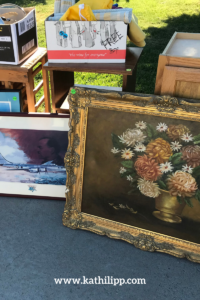
- Make a pile. Load up boxes. Sort and organize. Go through closets, drawers, basements, and garages and come up with the items you’ll sell. (This is a perfect time to declutter!)
- Group like items. Furniture, books, clothing, baby clothes, kid’s items, tools, dishes, kitchenware, appliances, household items, and so on. If you bought it, you can probably sell it.
Do you have enough desirable items to warrant a garage sale?
Pricing
“There is no better deterrent from bringing new items into your home than seeing that candle you bought for $24.95 re-sell for only $2.50. This is the Clutter Tax we all pay for excess stuff.” -Karen M
- Be realistic. Garage sales draw bargain hunters. It is unlikely you can sell an item for even a fraction of what you paid. Even like-new items may not sell for more than half the original price. Exceptions: Certain collectibles. Antiques. Refurbished items.
- Decide ahead of time if you’re willing to dicker or if you’ll have a half-price hour or a last call (selling everything for a dollar) at the end of the day.
Remember your objective is not to make money, it’s to get rid of stuff. Bringing it back in the house defeats the purpose of having a clutter-free garage sale.
Cash
A few days before the sale, visit the bank. Obtain a wide variety of bills in different denominations. If you priced items under a dollar you will also need change.

Display.
Staging is important!
Put the “wows” upfront. You want stuff that will literally stop traffic. Furniture, tools, and electronics are your best bet for getting a spouse to pull the car to the curb.
Clothes. Hanging, easily viewed clothing sells best. A garment rack is ideal, but a shower rod or tautly hung rope can work. The next best option is folded clothes preferably on a table. Be sure to put up a sign that says “Hangers Not Included” unless you’re decluttering hangers too.
Books, CDs, DVDs. Create a temporary display. If you have enough shelf space, place the front covers face out. Next best option? A table. Try to keep the shelves looking full (this is a great job for kids).
Group items. Housewares, small appliances, bath items, baby clothes or toys, yard items, etc. But make sure there’s plenty of space between displays for people to comfortably move.
Advertising
On the web. Online groups exist to help you get the word out. Check into your favorite sale sites, neighborhood, or market place, and add your listing. Highlight the kinds of things you’re selling (tools, kids’ clothes, furniture, etc.) so you attract the right buyers.
On the street. Create large, readable signs to attract more drive-by traffic. Neon poster board is great for this. Add a few secure balloons to draw attention.
Check city ordinances regarding sign size and location of display signs. Although many people use utility poles, this often violates city rules. Also, be a good steward and collect all signs at the end of your sale.
Tell your friends. Share your goals. Be sure to let your Facebook or Instagram friends know as well.
Newspaper. Running a cheap ad in your local newspaper or an online classified service may bring you more shoppers.
Back-Up Plan
What will you do with anything leftover?
Who will be taking the items away?
Where will it go?
If you were willing to get rid of the stuff in the first place, don’t let it wiggle it’s way back in.
With a lot of planning and a bit of hard work, you can have a successful garage sale. Whether your sale makes $100 or $1000, if you’ve met your goal to declutter you’ve triumphed! Your heart and home will be lighter.
Your turn. What additional tips can you add for a clutter-free sale?
*Thank you, Karen M, (of Clutter Free), and Kathi Lipp for contributing strategic suggestions included in this article.
April Kidwell lives in the Pacific Northwest with her science-geek husband, soon-to-fly young adult children, three dogs, two cats and a gecko. She writes Contemporary and Historical Christian romance for the Waiting Heart and comes from a long line of “what-ifers.” (What if we need it? What if we make it useable again? What if…?) Connect with her at https://www.blessfulwritings.com, https://www.instagram.com/blessfulwritings/, and https://www.facebook.com/Blessfulwritings/.
We would love to stay connected.
To share your thoughts:
Leave an honest review on iTunes. Your ratings and reviews really help and I read each one.
Subscribe on iTunes or subscribe to our newsletter now.

by Clutter Free Academy Team | Jun 1, 2020 | Clutter Free, Clutter Free For Life, Clutter Free Home, Ready For Anything, Recipes |

Apricot and Blueberry Oatmeal Bars
I love any recipe that is a twofer.
A twofer is any dish that can be served just after making, and then is also fabulous later on as a LOOP (Left Over On Purpose.)
Let me introduce: Baked Oatmeal. 
The reason I love this recipe is twofer:
- It is a warm, nourishing breakfast to have on a Monday morning when the world feels like too much and you just need some comfort food to make the world right again.
- It is perfect on a Tuesday morning, straight from the fridge as an “Oatmeal Bar” which I then grab and go as I drive into town for work with my homemade latte.
See? Twofer. (That is, if your crew doesn’t eat the whole pan first. If that’s a possibility, you may want to consider making TWO pans to be assured of oatmeal bars later.
Ingredients:
2 1/2 cups oats
1 teaspoon baking powder
2 teaspoons cinnamon
1/2 teaspoon ground ginger
1 teaspoon salt
1 1/2 cups whole almonds, roughly chopped
1 1/2 cups dried apricots, roughly chopped 
1 cup blueberries
1 1/3 cups whole milk
2/3 cup heavy cream
1/4 cup honey
1/3 cup brown sugar, divided
1 egg
1/4 cup butter, divided (2 tablespoons melted, 2 tablespoons room temperature)
1 teaspoon vanilla
Preheat the oven to 350° F and grease a 9 x 9-inch baking dish.
In a large bowl, combine the oats, baking powder, cinnamon, ginger, and salt. 
Fold in the almonds, apricots and blueberries. Spread the mixture evenly into the baking dish.
In a medium bowl, whisk the milk, cream, honey, 1/4 cup brown sugar, egg, 2 tablespoons melted butter, and vanilla to combine. This creates a custard-like mixture that you then pour over the oats.
Cut up the rest of the butter and put that on top, along with the remaining brown sugar.
Bake for 25 or 30 minutes, or until the oatmeal has absorbed the liquid and is golden brown on the surface.
Cool slightly before serving.
Let me know if you’ll be trying baked oatmeal, or if you have a favorite twofer recipe in the comments!
We would love to stay connected!
To share your thoughts:
Leave an honest review on iTunes. Your ratings and reviews really help and I read each one.
Subscribe on iTunes or subscribe to our newsletter now.

 Are you longing for a place of peace from which you can love others well? The Clutter-Free Home: Making Room for Your Life is your room-by-room guide to decluttering, reclaiming, and celebrating every space of your home.
Are you longing for a place of peace from which you can love others well? The Clutter-Free Home: Making Room for Your Life is your room-by-room guide to decluttering, reclaiming, and celebrating every space of your home.
